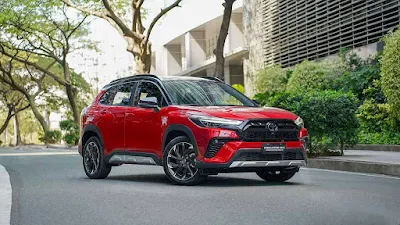Despite push back from the Department of Trade and Industry (DTI), the National Economic and Development Authority (NEDA) extended its zero-tariff policy to cover hybrids (HEVs) and plug-in hybrids (PHEVs) until 2028 in a bid to wean the country away from fossil fuels and boost its electrified vehicles market.
Under the original Executive Order 12, only electric vehicles (EVs) as well as their parts and components were temporarily granted zero tariffs until 2028.
With this expansion, the coverage has been expanded to “34 tariff lines.” The revised policy now encompasses e-motorcycles, e-bicycles, nickel metal hydride accumulator batteries, e-tricycles, HEVs (Hybrid Electric Vehicles), and PHEV (Plug-In Hybrid Electric Vehicle).
For its part, the DOE lauds the expansion saying that the move “will stimulate demand for electric and hybrid vehicles, encourage domestic manufacturing and assembly, and generate new jobs within the green technology sector.”
The Chamber of Automotive Manufacturers of the Philippines, meanwhile, had this to say: “CAMPI adopts an inclusive approach to vehicle electrification, recognizing that all EV technologies—hybrid EV (HEV), plug-in EV (PHEV) and Battery Electric Vehicle (BEV) can contribute to the broader policy objectives of energy security and greenhouse gas emission reduction.”
According to data from the Land Transportation Office, as of 2023, there were 7,515 EVs among the 14,269,414 registered land transport vehicles in the country.
Under the Comprehensive Roadmap for the Electric Vehicle Industry or CREVI, the Philippines is targeting to sell 311,700 EVs by 2028 under the business-as-usual scenario, along with establishing 7,300 EV Charging Stations (EVCS) in the short-term period or from 2023 to 2028.
As of April 2024, there are at least 563 registered EVCS charging points nationwide recognized by the DOE.
After 2028, import duties on electrified vehicles will go up between 5 to 30 percent.


Around how much cheaper will hybrids be? With BEVs already taking advantage of the zero tariff coverage, why is it that they’re still expensive?
ReplyDeleteIt could be around 100k for a 1.5M hybrid
DeleteThe one major concern for EVs are batterries that needs to be replaced every 5 years which is super expensive!
DeleteI hope hybrids actually get cheaper but all I can see are brands making more money on hybrid models.
ReplyDeleteZero tariffs are useless if they dont pass it to the consumers.
ReplyDeleteThis will only benefit the distributors/dealers as they will keep the addtional tax benefit as extra income.
MG,Chery,Mitsubishi,Geely and Honda are the ones heavily benefiting from this
ReplyDeleteToyota is likely just gonna do a 50,000 Peso price decrease and then pocket the remaining ones.
Same sentiment with Toyota or Lexus. Doubt if they will lower it to 30%.
DeleteWe hope the govt can monitor these car dealers if they will properly implement the price reduction in the hybrid cars.
ReplyDeleteThe price of the Nissan Leaf was cut by 28% last year when tarrifs on PHEVs were removed. Should be more or less the same once dealers announce new pricing for hybrids soon.
ReplyDeleteFor it to work, government should audit and fine those not passing on the benefits
ReplyDeleteSana parehas sa bang bansa, ang government subsidy upon buying the car, para lahat makukuha ng buyer.
ReplyDeleteDapat direct ang discount/subsidy like in other countries.
ReplyDeleteIncentives should be in the form of rebates, just like in other countries. These greedy distributors don't pass the full savings to consumers.
ReplyDeleteMaybe Toyota will not pass on the full savings but other car makers will coz they will have their hands full battling the Chinese brands. Hybrids don't have range anxiety buy you still have 2 maintain and buy 2 power systems.
ReplyDeleteMuch much higher repair and maintenance!
DeleteGovt should simply reimburse the tariff fees for the already imported units. Legally Im not sure yet if this is possible lol. Should be fair to the consumers as well if they lower the actual price by 25%. Eyeing on kicks lately good thing I havent contacted the dealership yet
ReplyDelete